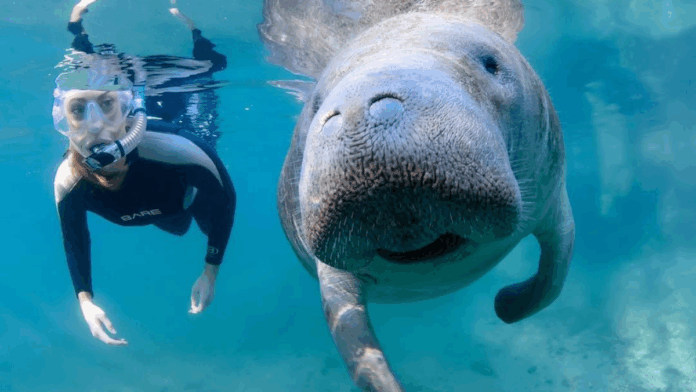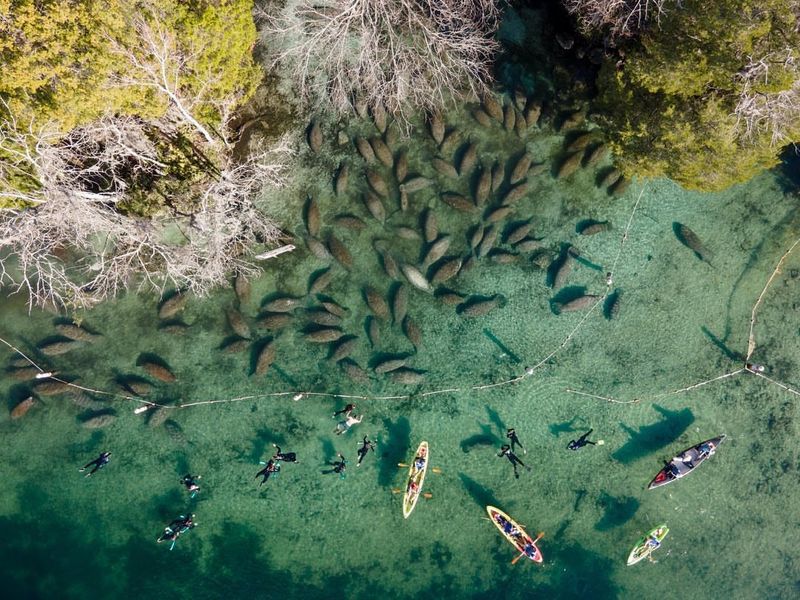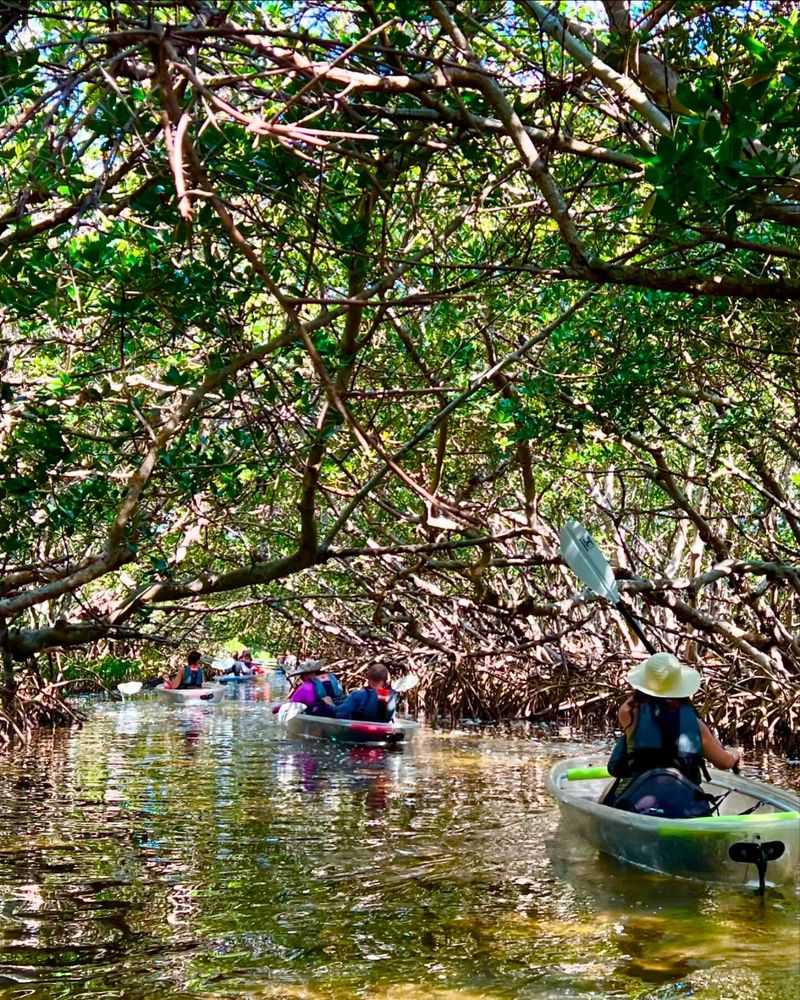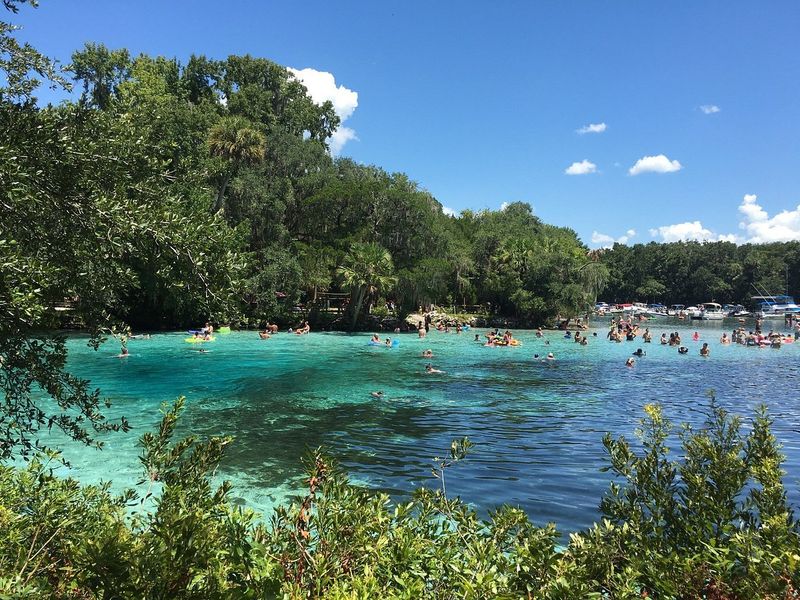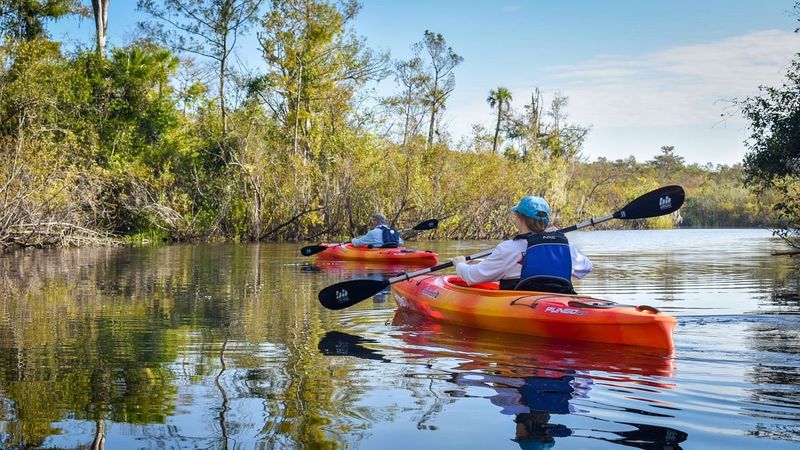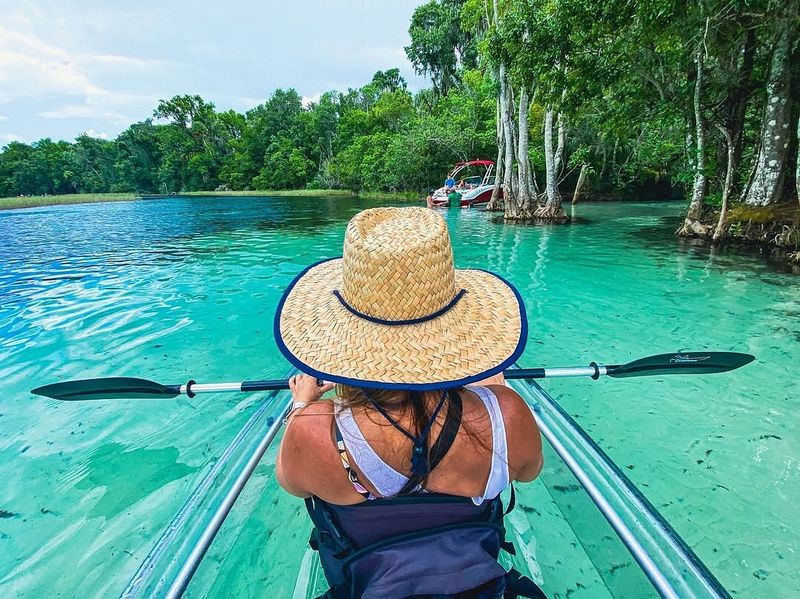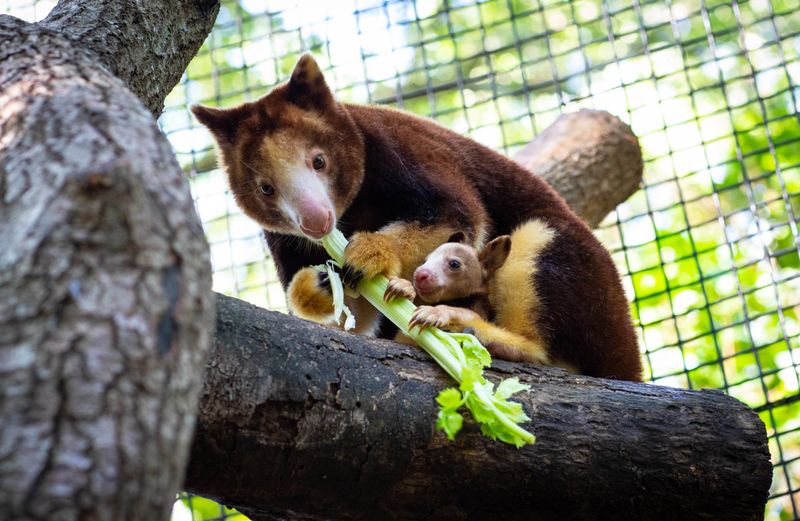Florida is home to some of the most amazing animals on the planet, from gentle manatees to powerful alligators. Exploring this wildlife doesn’t have to be scary or dangerous when you know the right ways to do it.
Whether you’re paddling through mangrove tunnels or watching birds along scenic trails, there are plenty of safe adventures waiting for you in the Sunshine State.
1. Swim with Manatees in Crystal River
Between November and March, Crystal River becomes a magical gathering place for hundreds of manatees seeking warm water. These enormous sea cows can weigh over 1,000 pounds, yet they’re surprisingly calm and curious around humans.
Guided tours teach you proper etiquette before you enter the water, ensuring both your safety and the manatees’ comfort. You’ll wear a wetsuit and snorkel gear while floating quietly, letting these gentle giants approach you on their own terms.
Many visitors describe it as a once-in-a-lifetime experience that creates lasting memories and deep appreciation for marine conservation.
2. Airboat Ride Through the Everglades
Nothing quite compares to the thrill of gliding across shallow marshes at high speed while searching for wildlife. Airboats use giant fans instead of propellers, allowing them to skim over water just inches deep without harming plants or animals below.
Expert captains know exactly where alligators sunbathe on muddy banks and where wading birds hunt for fish. You’ll spot herons, egrets, turtles, and if you’re lucky, even a Florida panther in the distance.
3. Kayaking Through Mangrove Tunnels
Mangrove forests create natural tunnels that feel like secret passageways into another world. Paddling through these shaded waterways offers close encounters with fish, crabs, birds, and sometimes even dolphins or manatees in nearby estuaries.
The twisted roots provide nurseries for baby fish and shelter for countless creatures, making every paddle stroke a new discovery. Coastal areas like Tampa Bay, the Ten Thousand Islands, and the Indian River Lagoon offer excellent mangrove kayaking.
Rental shops provide all necessary equipment and safety instructions, making this adventure accessible even for beginners seeking peaceful wildlife observation.
4. Bird-Watching Along the Great Florida Birding Trail
With over 500 species documented, Florida ranks among the top bird-watching destinations in North America. The Great Florida Birding Trail connects hundreds of viewing sites across the state, from coastal beaches to inland wetlands.
Spring and fall migrations bring spectacular variety, while year-round residents include roseate spoonbills, bald eagles, and painted buntings. You’ll need binoculars, a field guide, and patience to spot rare species hiding in vegetation.
Many sites feature observation platforms and marked trails designed specifically for birders, making it easy to spend hours there without disturbing natural habitats.
5. Early Morning Visits to Natural Springs
Arriving at natural springs right after sunrise rewards you with incredible wildlife activity before crowds arrive. Florida’s crystal-clear springs maintain a constant 72-degree temperature year-round, attracting animals seeking comfortable water conditions.
You might watch otters playing, turtles sunbathing on logs, or fish schooling in water so clear you can see 100 feet down. Popular springs like Ichetucknee, Rainbow, and Wakulla offer boardwalks and swimming areas where wildlife viewing happens naturally.
The peaceful morning atmosphere enhances the experience, allowing you to connect with nature in ways that busy afternoon visits simply cannot match.
6. Wildlife Refuges and Boardwalk Trails
Protected refuges like Merritt Island provide safe habitats for endangered species while offering visitors excellent viewing opportunities. Elevated boardwalks let you walk directly through marshes and forests without disturbing sensitive ecosystems below.
These trails bring you eye-level with nesting birds, basking alligators, and grazing deer in their natural environments. Interpretive signs along the way explain animal behaviors and conservation efforts protecting these precious spaces.
Many refuges offer both driving routes and walking paths, accommodating different mobility levels while ensuring everyone can enjoy spectacular wildlife encounters throughout the year.
7. Guided Eco-Tours with Local Naturalists
Local naturalists possess deep knowledge about Florida ecosystems that transforms ordinary trips into educational adventures. These experts identify animal tracks, explain plant adaptations, and share fascinating stories about the interconnected web of life.
Professional guides know where animals congregate during different seasons and times of day, dramatically increasing your chances of meaningful encounters. They also emphasize ethical observation practices that protect wildlife while maximizing your learning experience.
Tours range from boat excursions to walking safaris, with guides adapting explanations to audience age and interest levels for maximum engagement and understanding.
8. Snorkeling and Glass-Bottom Kayaking
Exploring underwater worlds doesn’t require scuba certification when you choose snorkeling or glass-bottom kayaks. Florida’s coastal waters and spring-fed rivers teem with colorful fish, sea turtles, rays, and vibrant marine plants visible from the surface.
Glass-bottom kayaks offer a dry alternative, letting you peer down at aquatic life while paddling above. Popular locations include John Pennekamp Coral Reef State Park and various spring systems throughout central Florida.
Rental facilities provide all equipment and safety briefings, ensuring even first-timers can safely enjoy these mesmerizing glimpses into Florida’s aquatic ecosystems.
9. Visit Wildlife Sanctuaries or Teaching Zoos
Wildlife sanctuaries and teaching zoos offer something special that regular zoos often can’t: a chance to learn about rescued animals while supporting their care. Many of these facilities focus on Florida natives like panthers, bobcats, and injured birds that can’t survive in the wild anymore.
Staff members share fascinating stories about each animal’s journey and explain how humans impact their habitats. You might even get to watch feeding time or see baby animals being bottle-fed.
These places prioritize education over entertainment, making every visit meaningful. Best of all, your admission fee directly helps fund medical care, food, and enrichment activities. It’s a conservation you can feel good about supporting!
10. Take an Evening Nature Walk to Observe Nocturnal Animals
When the sun sets over Florida’s wild spaces, a whole new cast of characters emerges from their daytime hideouts. Armadillos shuffle through leaf litter, barred owls call out their distinctive hoots, and flying squirrels glide between pine trees like furry acrobats.
Many state parks and nature centers offer guided night hikes with experienced naturalists who know exactly where to spot these elusive creatures.
Bring a red-filtered flashlight to see without disturbing the animals, and wear closed-toe shoes for trail safety. You might catch the glowing eyes of a raccoon or hear the rustling of an opossum searching for dinner.


